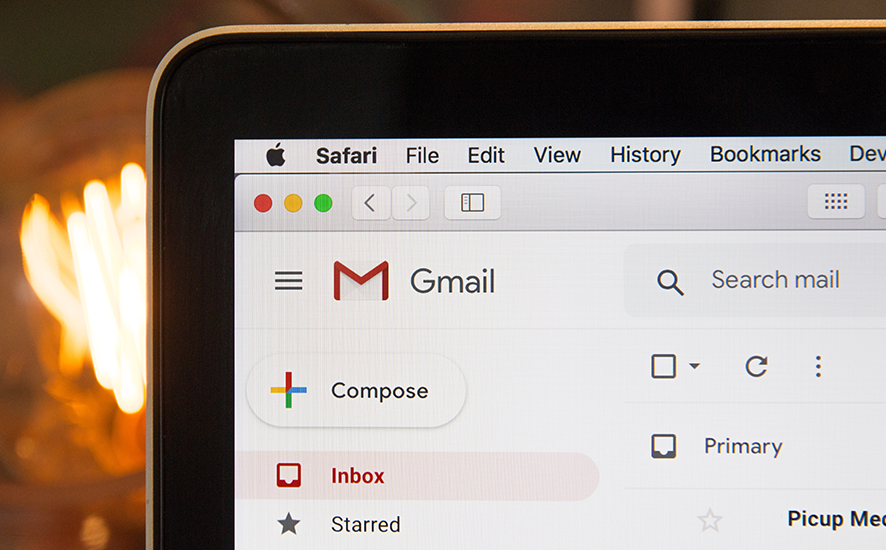So, your storefront is set up and looking beautiful. You’ve sussed your supplier, so you know you’re going to be supplying the best of the best of the best. You’re roaring to go and ready to make your business empire blossom, but, there’s just one snag. Nobody is here. Like that sweet little girl setting up her lemonade stand in her back garden, nobody seems to be passing by. There is a solution to this problem, a way to open the back gate and let the customers flood in. That solution is drop-shipping marketing.

Drop-shipping marketing? How do I do that?
Now, we know that you’re not marketers. In fact, you might be entirely new to the whole process of website management. Well, we have so much good news for you. Firstly, Shopify does have apps for a number of marketing purposes. This is great for those novices who want a generalised approach. You can take a look at our free top picks here. There are both pros and cons to taking the app route. Pros: It’s easy – super easy. The app does the hard work for you. Cons: It’s the same for everyone. Those app producers didn’t make that app just for you, which means everybody that uses it is basically using the same approach.
So how do I make it more personal?
Have you ever heard the phrase “if you want something doing right, then do it yourself”? Yeah, well, that. The best way to tailor your drop-shipping marketing to you is to do it yourself. As we said before, we know that you’re not marketers. We know you probably don’t exactly know where to begin. But, have you heard the other well-known phrase “everyone’s gotta start somewhere”? Well, that too. Which is why we’ve put together this general marketing crash-course for drop-shippers.

Drop-Shipping SEO
SEO is a word (well, an abbreviation) that is thrown around a whole lot. But do we really know what it is? Do we know what it means? How to do it, and most importantly, how to do it well? SEO stands for Search Engine Optimisation. Put simply, it’s making your store, your product pages and pretty much anything that you unleash into the World Wide Web super-appealing to search engines. Specifically, the Big G.
There are so many ways that you can tailor your information so that they are optimised for search engines. From the words that you use to the information that you provide, right down to what you call your products. Each and every aspect directly affects how search engines look at your store. Nobody is going to become a drop-shipping marketing SEO pro overnight, so we’ve summarised the basics for you so that you can be well on your way to getting noticed by the robots.
SEO basics
- Your title – This one seems simple, but it can be a fine art. You need to balance being descriptive enough with not rambling. Selling a box? Don’t just call it a box, that doesn’t say enough. Try instead ‘Forest Green Small Plastic Box’. That way people know exactly what you have to offer
- Metadata – This is basically a snapshot of what you’ve got. It’s what Google displays as search results. Your job here is to sell it with a sentence – or two. Be descriptive, so that your customers know what to expect and make sure that your description is saying enough to entice someone to actually click through to your website and have a look at what you’re offering
- Keywords – These are basically the words that people search for when they see your page. They need to be relevant. The best way to choose your keywords as a novice, and without any extra tools is to consider what you would look for if you were searching for your products
- Product Descriptions – If you don’t ass a product description at all, then how can anyone know what you’ve got? Your description needs to be unique, don’t copy and paste from anywhere and it must be natural sounding

How does PPC work?
I know, right? This drop-shipping marketing business is basically just full or three-letter-abbreviations. PPC stands for pay-per-click. As you have probably worked out by that pretty self-explanatory title, this one is a little bit less free than SEO. However, as a result, it is often a little more effective too – especially short term, as once you’ve set everything up and enabled your advertising campaign it applies immediately.
Similar to the no-win-no-fee claims that every single accident helpline was boasting for a while, pay-per-click works in a similar way. If nobody clicks on your ad, then you don’t pay for it. But it is worth bearing in mind that if someone clicks on that ad, you’re paying for it – whether they follow through with the purchase or not. There are some amazing benefits to PPC and it’s not too tricky to set up either. We’ve summarised how to get started.
PPC Basics
- Targeting Keywords – One of the benefits of PPC is that it’s targeted. You can target specific keywords (which hopefully you’ll already have thanks to your SEO) so that your ad is only displayed when people are looking specifically for what you’ve got.
- Targeting Audience – If you’re using PPC, you can even target who you want your ad to be shown to. This is invaluable if you stock a wide range of products. There is probably not much use in advertising anti-wrinkle cream to teenagers, for example.
- Budgeting – You choose your own budget on a click-by-click basis. This can be set up per product pretty easily. If you pay AU$2.50 for a click and make a AU$100 sale, then your return is pretty good, but if you’re paying AU$2.50 for a AU$10 item, then, not so much. It’s also worth bearing in mind though, that those other suppliers will also be using PPC, so you need to make sure that you’ve budgeted enough to allow for your competition too
- Measuring – Because PPC is so immediate, you can start pretty much straight away. You can also monitor your advertising campaigns. Work out what’s successful, what’s working for you and what simply isn’t. Again, that immediate nature means that if it’s not helping then you can just turn it off

Drop-shipping marketing emails
Chances are, if you have ever bought anything from anyone online ever, then you’ve probably received some form of email marketing afterwards. For years it was part and parcel of having an email address. Although it is a little less obtrusive these days, it is most definitely still a thing. And it still works too. Every email that you get with an exclusive offer, a discount code or a new product in it is email marketing.
Email marketing has usually got a very specific purpose, but this isn’t always the same thing. There are definitely multiple types of email marketing. Ultimately, when you’re gathering your drop-shipping marketing toolkit together, there are a few different types of emails that you might want to consider.
Email Basics
- Newsletter – These emails keep your customers informed about what’s going on. If you publish blog posts then it may include those, and it’s great for repurposing content that you may have used elsewhere. You can include a diverse range of information in newsletter emails, but you need to make sure that they’re regular. They can hugely increase your brand awareness
- Standalone – These dedicated emails specifically address one specific thing that you are offering. This could be an invitation to an event, a fantastic new offer, notice of a change to some details – for example website relocation – or something new that you have released. These are often untargeted and are sent to your whole database, which isn’t the most effective way to send emails, but there is a time and a place for these
- Transactional – These emails are normally triggered by your customers performing an action. Examples of these emails are welcome emails, order confirmations or even a thank you for shopping with me. It also includes those emails which provide tracking details
- Re-engagement – These emails nurture those customers that aren’t quite as active as the rest. They might have exclusive offers in them, they could simply say that you miss them or even let them know what’s new since the last time they shopped with you

Social Media Drop-Shipping Marketing
Social media has taken the world by storm. From the early days of MySpace and Bebo to the modern-day TikTok, social media plays a huge part in both business and personal life. The three main social media platforms that are used, especially by companies are Facebook, Twitter and Instagram. That’s not exhaustive though. Pinterest and Snapchat are another two networks. It all depends on your business and where your audience is – and of course, how much time you put in.
Social media can be used to see what your customers are saying about you as well as to actually talk to them. It makes you, as a business owner, more human. Social media is a powerful tool that you should use to your advantage.
- Posting – This is the main purpose of social media. You should post regularly; you can use a scheduling tool to hep you with this and create all the posts in one go if you think you won’t be able to keep up otherwise. Make sure to post a variety of text, images, videos and GIFs. Keep it fresh. Keep it engaging
- Engagement – If you post on social media, you’ll probably get comments, perhaps a few messages. I mean, that’s kind of the point of you posting in the first place. It’s important that you engage with them. Respond to them, otherwise, you’ll make a name for yourself as not caring, which is worse than having no social media presence at all
- Paid Advertising – As we touched on slightly in the PPC section, you can use paid advertising through social media. This is so very valuable, think about how much time so many people spend browsing their media channels. You can be very specific in your targeting too which is fantastic
- Analysing – Most social media platforms have tools for businesses that help them to monitor their posts and advertising campaigns. You can use this to see how your shop-shipping marketing is going. If you use special discount codes then you can also monitor this yourself, plus you can see how many likes, shares, comments and messages a piece of content generates quickly and easily

Referral Drop-Shipping Marketing
Referral marketing is taking the approach of letting your business speak for itself, or rather letting your customers speak for your business. There are a few different ways to do referral marketing.
Few people trust advertising in this day and age; however, they do trust their friends. Various studies have shown that people trust recommendations from friends 7-10 times more than they trust traditional ads. 92% of people say they trust recommendations from people that they know.
Referral Basics
- Word-of-Mouth – The joy of this one is that it’s free. A simple if you’ve enjoyed our service/products then please let your friends know. It’s also natural for us as people to tell our friends when we’re impressed with something, but bear in mind, it works the other way too – we’re always keen to rant about the latest problems we’ve had with so-and-so
- Refer-a-Friend – Studies have shown that more than 80% of customers who were satisfied with the products and services they received are willing to recommend to friends and family, however, less than 30% do. You can shift that percentage by influencing them to do so. Whether it’s a discount code when you refer, a freebie on their order or something else entirely, refer-a-friend schemes work
- Business Referrals – If a company has a loyal customer base, who trust them, and they recommend you, then their customers are likely to trust their judgement. These referrals do tend to be less effective than personal referrals, but they’re definitely more effective than doing nothing at all.
- Case Studies – Similarly this type of referral is less effective than referrals from people that your customers know, they trust, and they have an ongoing rapport and friendship with, but they do make a huge difference. Think about how many people read the reviews of a product before they make a purchase, use that to your advantage
Your Drop-Shipping Marketing Crash Course
So, there you have it – a general marketing crash course for drop-shippers. What do you think will work best for you? We’d advise taking more than one marketing style and tailoring them to your business. Are you ready to get started? Sign up for drop-shipping with Contrado now and start your own online business empire.


